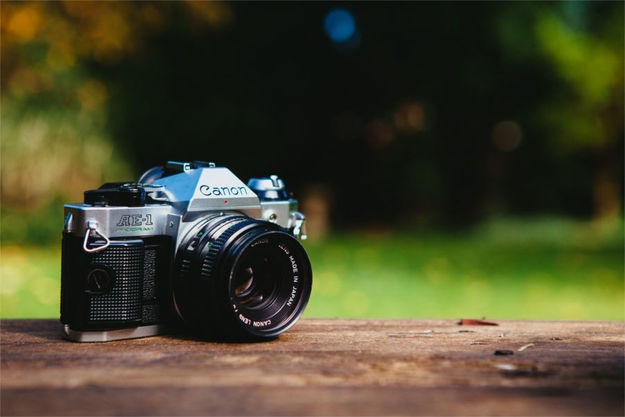|
I get asked this a lot, so here’s my answer to the question, “Is photography art?” I empathize with the view that photography must be an art form because photography has obvious aesthetic features: It’s a kind of re-creation of reality, it’s a selective re-creation of reality, and the photographer’s choices can be motivated by his metaphysical outlook on life and the world — on his metaphysical value judgements. Sounds a lot like art. Then, why distinguish art (drawing, painting, sculpture) from photography? The reason is that a work of art directly reflects the mind. A photo does not. What makes an artwork art is not primarily that it’s a re-creation of something, or even that it’s a selective re-creation of something. It is that the visual features of a work of art are direct products of cognition and evaluation — by a human mind. The lines, colors, and shapes of a work of art are created and directed by the artist’s understanding and assessment of what he’s re-creating, and most broadly, his assessment of life and reality. The visual features of a photograph are produced according to a mechanical / digital process. That process is built and guided by a human being, but the lines, colors, and shapes of a photo are dictated by the input from whatever the camera is aimed at, not by a thinking, evaluating consciousness. A way to understand the importance of this distinction is to think about what makes the imagery of a work of art possible compared to that of a photo. Now I’m going to come at this issue with emphasis on cognition as the hallmark of art, not metaphysics — not the fact that art reflects a metaphysical view. The reason I’m dropping metaphysics for now is because a photographer often makes choices based on his metaphysical outlook and sense of life — his metaphysics can guide his choice of subject and of which visual features to use: what sort of lighting, composition, color, and so forth. The fact that both art and photography can reflect the creator’s metaphysics muddies the distinction. So I’m going to highlight the issue of cognition here. The visual features of a work of art are made possible by, and reflect, the artist’s understanding of reality. Those of a photo do not. Let’s take two wildly different examples of subjects and, again, ignoring the metaphysics of art and photography. If a painter re-creates an apple, the outline he draws reflects his understanding of the shape of the apple. He knows that the apple is round, that its girth is circular and that its surfaces tuck in at the axis. The colors he chooses from his palette reflect his awareness of the color of the apple in a certain lighting condition. If he is a very observant and thoughtful artist, his work will accurately reflect the structure and volume of the apple, in addition to the nature of its skin and stem. His work will also reflect what he knows about the visual upshot of that kind of structure and surface in a certain lighting condition. In contrast to the cognitive basis of art, a photo of an apple does not require that the photographer know the apple. It helps, but it’s not necessary. The photographer can ‘point and click’ and produce an image of the apple without having any knowledge of what he’s recorded. The image itself — the lights and darks, the colors, lines, and shapes — are produced by the processes of the camera in response to the conditions of activation. Granted, the photographer can anticipate a great deal and set up the conditions of the shot in order to produce a certain kind of image. This preparation can involve artistic skill and aesthetic choices. But those choices result in a photograph that has artistic elements, it does not produce a work of art. Let’s turn to a very different example: an artist painting the Crab Nebula — a subject that is remote from the artist’s direct observation. If a painter re-creates the Crab Nebula he must base it either on what he sees through a telescope, or in a photographic / digital image of the nebula. Nonetheless, his painting will reflect what he understands or does not understand about the Crab Nebula, not just what colors or shapes he notices. If he knows that he is observing star dust, and understands at all what star dust is, he will use his paint to dramatize the diaphanous quality of the star clouds. If he is ignorant about star dust, he might produce what appears to be a solid form. What ends up on the canvas is determined by the artist’s success or failure to know his subject. Now in contrast to the painter, a photographer who captures the Crab Nebula doesn’t need to know what a nebula is, or grasp its structure, or know the cause of its shape. He need only know where to direct his camera and adjust its mechanisms to record what he can of the nebula. Despite his ignorance of the nebula, his photograph could end up being very beautiful and even include aesthetic touches, like a selective enhancement of color or brightness to give the image more clarity or vividness. Hypothetically, a photographer could intend to dramatize the broiling energy of the nebula, and evoke a sense of movement in an otherwise still subject. That would be an aesthetic goal and effect. But increasing the saturation of the colors is a modification of what is already there: a device’s visual record of the nebula. The distinction is clear between art and photography: Art reflects the artist’s knowledge of reality; photography records the input that is made available to the camera. In the case of the apple, the curving direction of the artist’s outline is guided by the artist’s understanding of the apple’s structure. In the case of the nebula painting, the diaphanous clouds and the expanding flare of light dramatized in paint are made possible by the artist’s grasp of the nature of a nebula. But what the camera produces does not reflect that kind of understanding or assessment. The features of the photographic image are not created by the photographer, but by the mechanism’s output according to certain input in certain conditions. The photographer modifies the input, the artist re-creates the observed and understood. That said, much of photography is beautiful and shares with the arts aesthetic features. Photographers today have very sophisticated ways of setting up their works to reflect their vision of what could be. And they have great ability to modify their photos to reflect aesthetic choices. Distinguishing photography from art is not to discredit photography, or to deny it aesthetic meaning, it is to identify both art and photography according to what they each are. In the end, the photographer’s image is a product of a mechanical / chemical / or digital recording. The artist’s image is a product of cognition-based re-creation.
4 Comments
|
Sandra J. Shaw
Sculptor. Art instructor Archives
September 2022
Categories |


 RSS Feed
RSS Feed